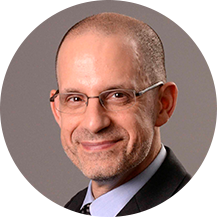Helping All Children Learn and Thrive

Listen in as our experts discuss a wide range of current topics. Check out all of our podcasts.
The first 10 years of life are critical to a child’s healthy development. But in many communities across the United States, systems meant to support early learning and wellness—such as preschool programs and home visiting services—are either uncoordinated or of inconsistent quality. These deficits do more than just frustrate parents. They also reinforce existing achievement and opportunity gaps, especially for low-income families.
In a recently published report, All Children Learn and Thrive: Building First 10 Schools and Communities, EDC’s David Jacobson proposes a new way of thinking about early childhood services so that all children can thrive. In this podcast, he describes the First 10 Schools and Communities model and also shares observations from promising programs across the country.
On the need to rethink early childhood services
Jacobson: One thing that is widely known about early childhood and early elementary education in the United States is that we have really fragmented systems. We have a lot of different programs, but they are not coordinated with each other. . . . And the research is really clear on this: children do best when the experience they have at any given time is really building on the previous experience.
On defining the First 10 Schools and Communities model
Jacobson: First 10 Schools and Communities are partnerships of school districts, elementary schools, and early childhood programs that come together to work on improving teaching, learning, and care for young children and their families. And what I think is characteristic of this work is that they are pulling together around three strategies. They are working to improve teaching and learning; they are developing deep partnerships with families; and they are providing comprehensive services to children and families.
On what it would take to implement more First 10 Schools and Communities
Jacobson: There are many communities across the country that have formed partnerships to work on education. . . . But typically the work for children ages zero to five is kept very separate from the work for elementary school. . . . What First 10 Schools and Communities suggest is the power of bringing that work together, and bringing school districts and elementary schools together with the zero to five early childhood community, and working on strategies across the full continuum.
David Jacobson recently took part in the panel discussion, “The First 10 Years School and Community Initiatives to Improve Teaching, Learning, and Care.” The event was hosted by the New America Foundation and moderated by Christina Samuels, associate editor of Education Week. View a recording of the event and follow the conversation on Twitter at #First10.
